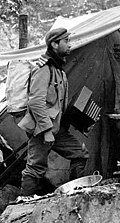ဖိုင်:Iron Chink Bellingham 1905.png

ဤနမူနာ၏ အရွယ်အစား - ၇၆၈ × ၆၀၀ ပစ်ဇယ်။ အခြား ပုံရိပ်ပြတ်သားမှု: ၃၀၈ × ၂၄၀ ပစ်ဇယ် | ၆၁၅ × ၄၈၀ ပစ်ဇယ် | ၉၈၄ × ၇၆၈ ပစ်ဇယ် | ၁၂၈၀ × ၉၉၉ ပစ်ဇယ် | ၂၅၆၀ × ၁၉၉၉ ပစ်ဇယ် | ၅၂၉၂ × ၄၁၃၂ ပစ်ဇယ်။
မူရင်းဖိုင် (၅၂၉၂ × ၄၁၃၂ pixels, ဖိုင်အရွယ်အစား - ၁၄.၃ MB, MIME အမျိုးအစား image/png)
ဖိုင်မှတ်တမ်း
ဖိုင်ကို ယင်းနေ့စွဲ အတိုင်း မြင်နိုင်ရန် နေ့စွဲ/အချိန် တစ်ခုခုပေါ်တွင် ကလစ်နှိပ်ပါ။
| နေ့စွဲ/အချိန် | နမူနာပုံငယ် | မှတ်တမ်း ဒိုင်မန်းရှင်းများ | အသုံးပြုသူ | မှတ်ချက် | |
|---|---|---|---|---|---|
| ကာလပေါ် | ၀၂:၃၉၊ ၁၁ ဇန်နဝါရီ ၂၀၂၁ |  | ၅၂၉၂ × ၄၁၃၂ (၁၄.၃ MB) | Jmabel | == {{int:filedesc}} == {{Information |Description={{en|Men operating an "Iron Chink" at the processing plant of Pacific American Fisheries, South Bellingham, WA, 1905. E. A. Smith's "Iron Chink", a cleaning device marketed to replace Chinese fish canners using anti-immigration and racist rhetoric. A Chinese laborer stands beside the machine. Additional information included inside the large print enclosure: newspaper clipping with the caption "A Chinese cannery worker at the P.A.F. Cannery in... |
ဖိုင်သုံးစွဲမှု
ဤဖိုင်ကို အသုံးပြုထားသော စာမျက်နှာများမရှိပါ။




